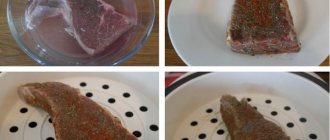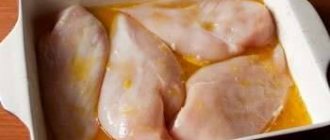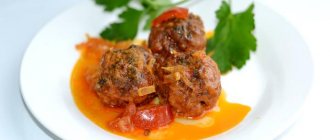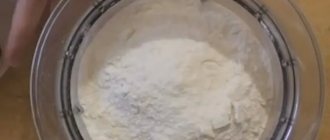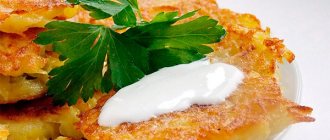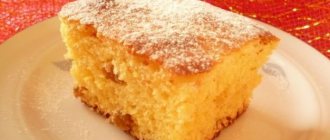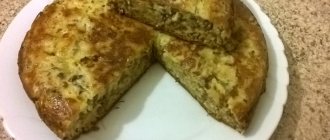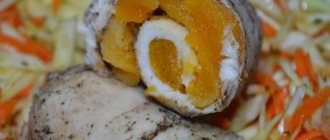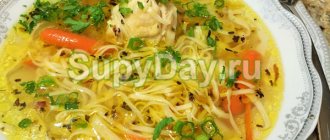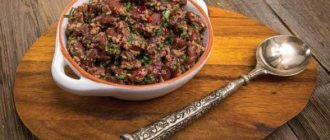Hello, friends!
All year I drank tea that I brought from Arkhyz (a place in our Northern Caucasus), made from mountain herbs. It's so delicious that I forgot about the regular black and green ones. I wanted to try making some kind of herbal tea with my own hands so that I could drink it every day. Before that, I myself only prepared teas from the leaves of garden plants and drank store-bought tea with herbs, for example, thyme.
I bought a small brochure to figure out what herbal teas can be prepared and how to make the right mixture. We will also come up with homemade tea recipes ourselves.
The most popular plants
The most popular herbal teas for every day are plants that are probably familiar to each of us:
- Linden - the composition of its inflorescences is rich in vitamins and micro- and macroelements necessary for the body. It has excellent anti-inflammatory properties, normalizes the functioning of the digestive system, and is an indispensable natural remedy during the cold season.
- Chamomile is one of the most popular plants in folk medicine, which has good anti-inflammatory and antiseptic effects. The human body is in great need of its constituent nicotinic acid, as well as flavonoids.
- Mint - this plant, which has a bright taste and aroma, contains many beneficial substances: menthol, flavonoids, as well as carotene, oleic and ascorbic acids. It has a calming effect, copes well with headaches, increases appetite, and strengthens the body's protective properties.
- Fireweed, or fireweed, is a plant rich in vitamins and microelements and has many medicinal properties that have been valued for a long time.
- Raspberry - the leaves and fruits of this plant have remarkable antipyretic properties, which are successfully used in the treatment of colds. Contains a huge amount of substances valuable for the body.
- Melissa, or lemon balm, is a plant with wonderful calming qualities. It has a positive effect on the functioning of the heart and has healing properties.
- Blackcurrant leaves and fruits contain a large amount of essential oils, carotene, ascorbic acid, phytoncides, vitamins C, A, B, P, and potassium.
- Rose hips are a storehouse of vitamin C (many times more than in lemon), as well as antioxidants. Has powerful bactericidal properties.
This is not a complete list of herbs that can be used in herbal tea recipes for every day.
In nature, there are still a large number of plants that have not only a pleasant taste and smell, but also powerful medicinal properties.
When to collect
Why do herbalists prefer to collect plants at the beginning of summer - in June? It is believed that by this time the above-ground part of the plants has gained its maximum strength and contains the highest concentration of the components of the composition. Of course, this rule does not apply to all plants. Some, for example, celandine, can be collected from May to September, others, for example, burdock (root) - in early spring or late autumn. In addition, in June the herbs actively bloom, and the aroma, which is concentrated in the inflorescences, is very important for tea.
Healthy plants without rot, black spots or rust are suitable for harvesting
Some herbs can be harvested several times throughout the growing season. These are nettle, clover, St. John's wort. These plants can grow back quickly after cutting and produce succulent young shoots and even bloom.
Herbs are collected in the morning, when the dew has disappeared from them and the flowers have bloomed. The plant is cut down to the lower leaves with a knife or picked so as not to damage the root. They look through it, remove leaves with spots, dried flowers, insects, wash it in water, if necessary, and lay it out to dry. If the plant has rough stems, only the leaves and inflorescences are usually collected from it. You cannot collect all the leaves and flowers from one plant, otherwise it will die.
Collection of raw materials
I collect and process different types separately, without mixing them. I remove petioles from the leaves of trees and shrubs. There are some more tricks when choosing the optimal collection time. Thus, it is better to collect fireweed and monarda in the flowering stage - the yield of raw materials is greater, and the grass itself is healthier.
But, say, a chokeberry leaf tastes better when it turns red in the fall. There is also this point: I take petals from many flowers, and discard the centers, since they are often bitter or have a strong smell, not always tasty. For example, chamomile petals have no aroma (not everyone likes it), but they greatly decorate the tea mixture. And peony petals are both beautiful and work as an anti-inflammatory agent and normalize metabolism.
Drying
I leave the prepared raw materials indoors in the shade to dry for 6-12 hours. To do this, I lay it out on fabric panels in a layer 3-5 cm thick. How to determine the end time of this stage? It is enough to squeeze a handful of leaves in your hand, and if the dried leaves that break do not crunch, and the lump on your unclenched palm remains crumpled, you are done. This step should not be skipped - it is very important for proper fermentation.
Fermentation
Collection of currant leaves for tea
It is this that allows you to make the taste of tea rich, the color bright, increasing its healing properties many times over. This process transforms complex, difficult-to-digest substances into simpler components that are accessible to our body.
To do this, I vigorously knead the withered leaves, achieving the release of juice and destruction of the leaf structure. It is convenient to do this in an electric meat grinder with a large grid. Dry, hard leaves of pear, honeysuckle and similar plants should first be frozen for a day: the juice is easier to separate from cells damaged by freezing. Fermented tea tastes better than regular tea.
I place the crushed or twisted raw materials tightly in containers, for example, made of plastic with lids, or in ordinary plastic bags and leave them in a room at an air temperature of 22-28° for 6-24 hours (the duration of the stage depends on the juiciness and temperature).
Let's say, the same fireweed quickly gains temperature on its own and ferments, but honeysuckle has to be kept for almost a day. And it’s hard to twist its leaves in a meat grinder - they are hard and dry. The finished – fermented – product acquires a pleasant, strong aroma, with a hint of overripe fruit and fresh silage.
Important. Often the fermented mass heats up on its own, and here it is important not to over-ferment or over-ferment.
After fermentation, the color of the future tea will become darker. Plants that contain large amounts of essential oils should not be fermented. The result can be a very unpredictable aroma, and the one that was inherent initially will most likely be lost.
Drying
I dry the future brew in the oven. Do you like dark infusion of tea? Then don’t rush to take it out, but lightly fry until lightly smoky. With experience, you will understand which degree of roasting tastes best to you. For example, we really love roasted homemade fireweed tea. No wonder it was so valued in Rus', and even in Europe, calling it Koporye tea, they respected it!
Blending
The last stage is mixing the finished raw materials. This is real creativity! For example, I love strong, tart Kenyan tea. However, if you add your own herbs to it, it will become simply magical!
I mix 1 glass of Kenyan tea and 1 handful each of pear, apple, monarda, honeysuckle and fireweed leaves, add a pinch of bergenia and flower petals. I store it in a tin and brew it like regular tea. It’s nice, after giving a guest “terribly delicious tea,” to give him a batch of this - for his health!
Dangerous herbs - you should know them by sight
It is wrong to think that you can go to the nearest park, forest or field, pick random fragrant herbs, leaves from trees and shrubs - and make infusions yourself, try them and get benefits. There are a great variety of plants that are not just dangerous, but can cause serious harm and even be fatal.
Remember how popular plant poisons were in the court struggles of high society in France? We know about this from the novels of A. Dumas, although poisons from plants were known both in ancient India and China. Yes, almost every nation knew a couple of secrets of deadly potions
Therefore, it is extremely important to “know by sight” the poisonous representatives of the flora of the region in which you live or collect plants
Here are just some of the most famous “poisoners”:
- dope,
- henbane,
- aconite,
- hellebore,
- belladonna,
- hemlock,
- wolfberry.
Carefully study the images of these dangerous herbs and shrubs so that you can immediately recognize them in nature and avoid making a fatal mistake. It is also wise to buy herbs at pharmacies or specialty stores if you do not collect herbal materials yourself.
Brewing methods
There are several basic methods for preparing tea with any additive in the form of dried herbs or berries. In these cases, you can take any tea, but preferably the most common medium or large-leaf black Indian, Ceylon, monastery or Chinese.
Rough Kenyan black tea may well be suitable for these purposes. You can try it with pressed Chinese green teas. For example, Yunnan teas - their light smoky aroma and fairly thick, cloudy color of the infusion are perfect for brewing with herbs. How to make the correct brew is described below.
Medicinal mixtures can be brewed independently or added in small portions to tea leaves.
Method one
Mix herbs and tea in a teapot, brew, pour into cups and drink. The disadvantage of this method is that the long brewing required for many herbs and berries spoils the taste of the tea. If you rely on the time of brewing tea, the taste and aroma of the additives will not be fully revealed.
Method two
Brew the herb in a separate teapot, allowing it to brew for a little longer. Then mix together in a teapot where the tea is brewed. With this method, you can vary the content of additives in the drink from a few drops to equal parts.
Method three
Make an intense decoction in a water bath. To do this, place the necessary components in a separate heat-resistant container, which we place in a pan of boiling water. Thus, the herbs are infused in hot, but not boiling water, which is important for preserving their beneficial properties. Under no circumstances should tea be brewed this way - with prolonged heating, the tea becomes more harmful than beneficial. Therefore, we brew tea separately - as usual.
Method four
It consists of steaming all the components in a thermos at a sufficiently high temperature. To do this, you need to take any thermos of suitable volume with a glass (not metal!) flask, place all the desired components there and fill it with hot, but not boiling water.
Water
In conclusion, a few words should be said about the water used to brew tea. Water for herbal teas or tea with herbs and berries should be of the best quality (ideally from a spring), have no taste or smell, and not leave a lump in the throat or scale in the kettle.
If such water is not available, you can use bottled water from artesian wells. Pay attention to the degree of water hardness. In spring water, the hardness indicator is a white precipitate that falls out.
There is nothing wrong with it, but in such water the tea gives off less aroma and taste. In bottled water, the hardness of water is determined as moles per cubic meter (mol/m3), a good indicator is 1-5 mol/m3, acceptable - 5-7 mol/m3. Hard water greater than 7 mol/m3 is unsuitable for brewing tea.
Reference. It is best to heat water in a regular enamel kettle over an open fire. The fire should be of medium intensity so that it is easier to understand when it needs to be turned off. The fact is that water for tea cannot be allowed to boil, otherwise all the salts and beneficial elements contained in the water will precipitate.
The criterion for the readiness of water is a continuous chain of bubbles from the bottom of the kettle - this is the boiling stage, at which the fire should be turned off, the water should be allowed to calm down a little (literally a minute) and then the tea should be brewed.
Don't be afraid that the water will cool down during this time. Try to avoid heating water in plastic electric kettles. The water in them boils unexpectedly, heats up unevenly, and the plastic walls may release a completely non-tea smell.
Recipes with rose hips
Rosehip is the most popular ingredient in herbal teas. It is difficult to imagine a collection that would not contain the dried reddish berries of the thorny bush, inside of which there is a wealth of benefits and a storehouse of vitamins.
Recipe No. 1
- Take a teaspoon of rose hips.
- Pour a glass of boiling water.
- Leave for ¼ hour, pouring the liquid into a thermos.
- We obtain a concentrate designed for daily use for one person.
Recipe No. 2
- Mix one part of the fruits collected from the rosehip bush.
- Add one part of rowan berries.
- Steam the mixture by pouring the berries into a thermos.
- If you don’t have a thermos, use a water bath, drowning the berries in a glass of boiling water.
Recipe No. 3
- Take rose hips (two or three parts).
- Mix them with three parts of dry nettle leaves.
- Add some lingonberry berries (about one part) to the resulting mix.
- Pour 200 ml of boiling water over the berry and herbal mixture and get a concentrate.
Recipe No. 4
- Take three handfuls of rose hips.
- Mix them with the same amount of carrot roots that have been previously dried.
- Add a handful of black currant berries to the mix.
- And there - three tablespoons of chopped nettle shoots.
- Pour the mixture with 200 ml of boiling water and eat.
Recipe No. 5
- Take two parts of dry lingonberry leaves.
- Add one part of the following ingredients: rose hips, dry raspberry and currant leaves.
- Brew and get one serving of tea.
Any of the teas prepared according to the above recipes can be flavored with sugar or honey. Honey is healthier. But when adding it, you should remember that in hot water all the properties of honey are destroyed. Therefore, natural sweetener should be added to tea only after the liquid has cooled to 40 degrees.
Making bags
Today we will tell you how to learn how to make tea with your own hands. Not only will this project give you an inner sense of creativity, it will also introduce you to some very healthy teas that will help you in your health and, not coincidentally, excite your taste buds.
Prepared plants should be poured into purchased bags or those made independently.
Materials and tools
To work you need to prepare:
- multi-colored cards;
- empty tea bags;
- tea components according to the recipes below.
Tools you will need:
- glue gun;
- scissors;
- figured hole punch.
Making tea is easier than steamed turnips. Without straining, we search on the Internet for the nearest store that has the amount of tea you need. If there are no suitable stores in your city, go to the supermarket and buy different teas there. Open the packages and there you have the ingredients you will use.
On a note. You can also buy herbs at the market, collect flowers from your garden, or dry fruit peels. There are so many options for making your own herbal teas! We have collected 4 delicious combinations that we want to share. Try ours and feel free to come up with your own combinations!
Licorice root + mint
Licorice root has many benefits: it will relieve stress, cure a sore throat, and it’s simply delicious. The best part is that it's sweet and you won't want to add more sugar if you're used to pouring a spoonful into your tea.
For those who don't like licorice, fear not. The aroma of this root differs from the strong and specific smell of black licorice. Add about a tablespoon of licorice root to your empty tea bag. Fill the rest with mint and pull the string to close the bag.
Lemon verbena + mint + ginger + green tea
Green tea is full of antioxidants and has many health benefits, helping to reduce the risk of cancer and keep cholesterol levels in check. Add a little more ginger, lemon, mint, and you will give a real gift to your health. Divide the inner volume of the tea bags into four parts: first add green tea, then mint, fill the third part with ginger and add lightly crushed lemon verbena on top.
Rose buds + lavender + licorice root + white tea
This flavor blend is for all flower lovers. If some, having only smelled the smell of this tea, would immediately want to go to the SPA, then those who have already tasted herbal tea with a slight hint of sweetness, slowly sipping it, would dream of soaking in their garden of lush roses.
Add some white tea to a tea bag. Then put 2-3 pieces of licorice root in there for that touch of sweetness. Add 3-5 rosebuds depending on their size and add lavender to the rest.
Parsley + lemon verbena
Parsley tea?! Yes. Don't leave yet. We know that it sounds strange, but parsley tea is very healthy. Among its known benefits, it also helps with food digestion and cardiovascular health. Let's talk about the aroma. Tip: When you drink this tea, think of it as if you are drinking broth.
If you succeed and get the taste, you will definitely enjoy this loose leaf herbal tea. Place parsley leaves in a tea bag, then add about a tablespoon of lemon verbena.
The color of the tea depends on the composition.
A selection of the best herbal teas, ancient recipes:
- Healing chamomile tea. Sunny chamomile flowers contain salicylic, nicotinic acid, vitamin C, essential oils, pectins, carotene, gum, proteins and flavonoids. Chamomile tea has a calming, diaphoretic, anti-inflammatory, analgesic and sedative effect. Warm chamomile infusion will help cope with insomnia, stress, overwork and depression. Mix two tablespoons of dried crushed chamomile flowers with a teaspoon of mint and lemon balm. Pour boiling water and cover tightly with a lid. Add a teaspoon of honey to the finished drink.
- Vitamin herbal tea. Grind a handful of dried wild rose hips. Add a teaspoon each of thyme and strawberry leaves, 1-2 leaves of black or red currant. Pour boiled water over the healing tea mixtures.
- Winter warming herbal tea. It will help cure colds, increase immunity, and ease breathing and cough. To prepare it, mix sage, chamomile, linden, thyme, coltsfoot, oregano and rosemary in equal parts. Add raspberry, currant leaves, lemon or orange zest. Brew a medicinal herbal mixture in a thermos.
- Herbal tonic drink. Mix rosemary, Chinese lemongrass, lingonberry and black currant leaves, wild rose flowers, and meadow clover in equal quantities in a glass bowl. Pour 500 ml of hot boiled water into a heaped spoon of the mixture and leave for a third of an hour.
- Unique eucalyptus tea has strong antibacterial properties. Antiparasitic tea helps with oral diseases, bronchitis and asthma. This is an excellent drink and a lifesaver for diabetics. Pour a cup of boiling water over a teaspoon of eucalyptus leaves. You can add flower honey to taste.
- "Fortress". Requires 5 teaspoons of black granulated tea, 1 teaspoon of coriander, 1 liter of water, honey. Method of preparation: dried coriander fruits must be crushed in a mortar in advance. A coffee grinder is not suitable for this purpose, since the smell of the seasoning “eats” into the walls of the device and spoils the coffee. In a special bowl, washed with boiling water, mix tea and coriander. Pour boiling water over the mixture. Serve the drink with honey.
A few more recipes:
- Anti-inflammatory herbal tea. Combine a dessert spoon of dry sage, linden blossom, chamomile and nettle. Brew in a ceramic or glass teapot. Strain after 15 minutes. Add honey and a pinch of cinnamon to the finished drink.
- Exquisite tea made from rose petals. Dry fresh rose petals on a thick piece of paper. Then grind them and mix with green or black tea. Brew as usual. The drink will acquire an original taste and divinely delicate aroma.
- Herbal tea with thyme will invigorate, increase performance, give strength and energy, and relieve pain. Pour boiling water over a glass or porcelain teapot. Then add a spoonful of dry or fresh thyme, currant leaves and raspberries. The tea brewing time should not exceed 20 minutes.
- Ginger tea for weight loss. Finely grate a piece of ginger root. Add half a fresh lemon and a spoonful of coltsfoot. Fill with filtered boiled water. Strain after a quarter of an hour.
- Soothing herbal tea will help with insomnia, depression and nervous tension. Mix and brew in a thermos a teaspoon of mint, fennel, chamomile, lemon balm, hops, strawberry leaves and valerian.
- "Jasmine Garden" Required: 2 tbsp. l. green tea, 1/2 cup jasmine blossom, zest of 1 orange, 1 liter of water, sugar. Method of preparation: pour tea and jasmine flowers into a teapot. Add dried and crushed orange zest. Then pour boiling water over the mixture. Let the drink brew and drink it with sugar, hot or chilled. Instead of jasmine, you can add 3 teaspoons of linden blossom. But you need to steep this drink for about half an hour. Fresh honey will perfectly complement the taste.
Recipe "Apple with cinnamon"
When they say “cinnamon apple,” I immediately imagine a cozy, snowy winter. And also a delicious pie. But when you are on a diet and you can’t have sweets, you can always have tasty and aromatic tea.
It is no longer known which culinary specialist came up with such a tasty and invigorating combination of apples and cinnamon. But it doesn't go out of fashion. A tasty and healthy drink with apples and cinnamon is an excellent replacement for store-bought tea bags.
Ingredients:
- Apples - 2 pcs.;
- Cinnamon - 4 sticks;
- Black long tea - 1 tsp;
- Clean water - 1 liter.
Make a decoction of apples and cinnamon. To do this, cut the apples into slices, add water and set to cook on the fire. After boiling, add cinnamon sticks and cook for 15-20 minutes. Let it sit and infuse with aromas for 30 minutes.
Separately brew strong black tea. Mix the strained black tea with the broth and cook for 10 minutes. Pour the hot drink into glass mugs and add cane sugar or honey to taste.
We like to take this drink with us in a thermos on walks. It’s so great to drink a scalding drink in the scorching cold!
Preparation of activated compost tea
Reference. To prepare activated compost tea, I use rabbit bedding; it contains a lot of feed residues. Or I simply sprinkle spoiled feed on the leaf pile and spill it with water and fish waste.
If there is no rabbit droppings, I take leaf litter from under an old deciduous tree (oak, maple, linden, birch) and add grain and fish to it. The compost should be mature (attempts to make tea from unrotted manure or rotten grass ended sadly), that is, it should smell not like rotten fish, but like mushrooms or spring soil.
I place the mass (glass) in a three-liter bottle, fill it with settled (chlorine-free) water, add malt extract or molasses (40 g) or old jam (2 tablespoons) and turn on the aquarium compressor. After a day, foam begins to come out of the can. The tea is ready when a pleasant bready smell appears.
To ensure that fungi predominate over bacteria in the ACH in quantity and type, I add high-quality molasses, seaweed decoction, fish decoction, rolled oats, grated apple (a tablespoon) and humates (0.5 g per 2 liters of activated compost tea) to the water. If compost tea smells like garbage, you should throw it down the toilet.
I dilute the finished tea ten times and spray it on the soil or leaves as soon as possible (after 4 hours without aeration, the microorganisms will die). To produce microfauna-enhanced tea, I use hay. I put it in water for a couple of days, then decant the liquid into a jar before aerating and sparging it for three days.
DIY tea bag labels
Using a shaped hole punch, cut out pieces of paper - these will be blanks. You need two pieces of paper for each bag. Place them together and cut a thin line in the center so the tag will hold onto the edge of your cup.
Place a little hot glue on the tag to attach the tea bag string. Then make sure that both pieces of the tag are well glued to each other.
DIY tea can be an extraordinary gift!
How to choose a tasty drink?
It's no secret that any herbal tea is bitter. Therefore, you must independently choose for yourself a collection that suits your taste. As a rule, one plant dominates the collection, and the rest only harmoniously complement it, emphasizing the taste.
The compositions always come out according to the following scheme: spices + aromatic herbs + leaves of a berry plant. Allspice, cinnamon, vanilla, anise, cloves, and star anise are usually used as spices. All these ingredients harmonize perfectly and open up in a very special way if citrus fruits are added to tea.
Book box
To complete this non-standard composition you will need:
- old unnecessary book;
- good glue;
- stationery knife;
- colored or decoupage paper;
- Ruler and pencil;
- cardboard.
- ribbon, beads, lace, etc.
First of all, take an old book. Using a ruler and pencil, a rectangular marking is drawn on each piece of paper. Depending on the number of sections, 4 markings can be made. After completing this step, the drawn lines are cut out using a utility knife.
The result will be a depression as thick as a book. All sheets are glued together for better fixation. As a final step, the future tea box is covered with colored or decoupage paper and decorated, if necessary, with rhinestones, lace or beads.
DIY aromatic tea mixture
This homemade homemade tea will give you a festive mood and will be a pleasant gift for family and friends for the New Year.
What you may need:
- loose leaf black or green tea;
- spices: cinnamon, ginger root (ground or fresh), cloves, star anise, allspice or pink pepper, cardamom pods;
- dried herbs: thyme, mint, lemon balm, rosemary;
- citrus zest and segments: orange, tangerine, lemon;
- dried berries and fruits: cranberries, currants, apples, etc.
What ingredients will be included is up to you to decide; the list can be expanded. This is one of the main advantages of home blending. It can be only tea leaves and 1, 3 or even 5 components. There are no restrictions.
The proportions depend on your taste preferences. If you like very spicy tea, then for 100 g of tea leaves it is better to take 2-3 cinnamon sticks, 7-9 peppercorns, 2-3 star anise. If tea is being prepared as a gift, then you should limit yourself to a minimum amount of spices in order to only slightly flavor it, and not give it a strong aroma.
Cooking technology:
- Select the required ingredients.
- Dry naturally or in the oven a thin layer of zest and sliced ginger. Do the same with fresh apples, citrus slices (grapefruit, lemons, etc.).
- Dry berries, fruits, herbs or use ready-made ones.
- Crush, grind or leave the spices whole.
- Mix all ingredients, including tea, in a glass jar.
The tea mixture can be tasted immediately, but do not rush to add spices if the flavor and aroma characteristics are not clearly defined. After 1-2 weeks they will become brighter and more saturated.
These are the recipes for aromatic hot tea that will diversify and complement the New Year's feast. A tea mixture for a gift, made with your own hands and beautifully packaged in paper bags, jars or bags, will delight your family and guests.
photo: depositphotos.com/bezzznika
Useful tips
How to properly brew tea with herbal and berry additives:
- Mix tea and herbs in a teapot, pour boiling water, leave for 10-15 minutes. The disadvantage of this method is that it takes different amounts of time to brew herbs, berries and tea, which can lead to a distortion of the taste of the drink.
- We brew the herb separately and let it brew for a while, then pour the decoction into a teapot with brewed tea. This method allows you to select the quantity and concentration of the desired drink.
- You can prepare a herbal decoction in a water bath. To do this, place the herbs in a glass or enamel bowl and pour boiling water over them. Place this container in a pan of boiling water. Thanks to this method, the beneficial properties of herbs are preserved. In this case, tea must be brewed separately and then mixed with herbal infusion.
- Pour warm water over the herbs and bring to a boil over low heat. Let it brew for an hour. Mix the resulting infusion with separately brewed tea.
- Place all the necessary components in a thermos with a glass flask, fill it with hot but not boiling water and leave for about 40 minutes.
Since a variety of herbs can be used when preparing a drink, each of which has its own properties, their effect on the body can be completely different. Therefore, you need to know at what time and what kind of tea you can drink without harming your health and condition.
For example, in the morning you should not drink herbal teas that have calming properties. On the contrary, immediately after waking up, it is recommended to drink tonic drinks, which will tone the body and help you quickly regain vigor after a night's sleep. For this you can use strawberry leaves, as well as clover, lavender, and lemongrass.
Roots and fruits
It seems that our ancestors experimentally brewed everything as soon as they realized that this could be done. And in addition to herbs, flowers, leaves of various shrubs, roots and fruits were also used - mostly berries, but not rarely fruits. And all parts of plants contain something. Among fruits and berries, apples, currants, cranberries, lingonberries, rose hips, blueberries, plums and rowan are most often added to herbs. And from the roots, these are usually the roots of dandelion, burdock and ginseng.
